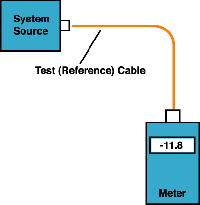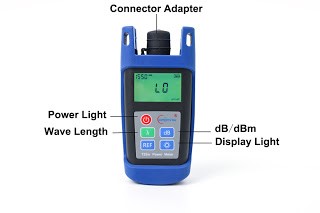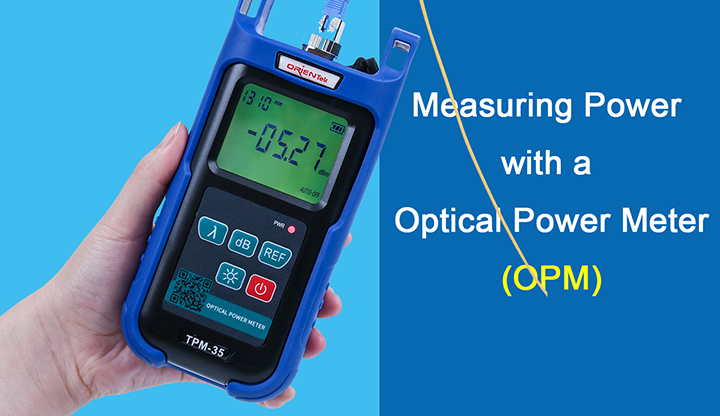Measuring power requires only a power meter (most come with a screw-on adapter that matches the connector being tested), a known good fiber optic cable (of the right fiber size, as coupled power is a function of the size of the core of the fiber) and a little help from the network electronics to turn on the transmitter. Remember when you measure power, the meter must be set to the proper range (usually dBm, sometimes microwatts, but never "dB" - that's a relative power range used only for testing loss! Read about "dB") and the proper wavelength , matching the source being used in the system (850, 1300, 1550 nm for glass fiber, 650 or 850 nm for POF). Refer to the instructions that come with the test equipment for setup and measurement instructions (and don't wait until you get to the job site to try the equipment, try it in the office first!)

To measure power, attach the meter to the cable attached to the source that has the output you want to measure (see diagram to the above). That can be at the receiver to measure receiver power, or using a reference test cable (tested and known to be good) that is attached to the transmitter to measure output power. Turn on the transmitter/source and give it a few minutes to stabilize. Set the power meter for the matching wavelength and note the power the meter measures. Compare it to the specified power for the system and make sure it's enough power but not too much.



